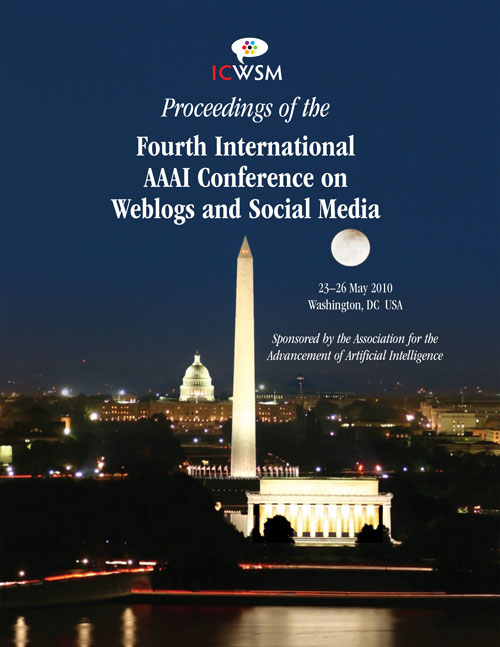Measuring User Influence in Twitter: The Million Follower Fallacy
DOI:
https://doi.org/10.1609/icwsm.v4i1.14033Keywords:
Influence, social networks, follower, TwitterAbstract
Directed links in social media could represent anything from intimate friendships to common interests, or even a passion for breaking news or celebrity gossip. Such directed links determine the flow of information and hence indicate a user's influence on others — a concept that is crucial in sociology and viral marketing. In this paper, using a large amount of data collected from Twitter, we present an in-depth comparison of three measures of influence: indegree, retweets, and mentions. Based on these measures, we investigate the dynamics of user influence across topics and time. We make several interesting observations. First, popular users who have high indegree are not necessarily influential in terms of spawning retweets or mentions. Second, most influential users can hold significant influence over a variety of topics. Third, influence is not gained spontaneously or accidentally, but through concerted effort such as limiting tweets to a single topic. We believe that these findings provide new insights for viral marketing and suggest that topological measures such as indegree alone reveals very little about the influence of a user.

